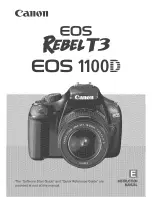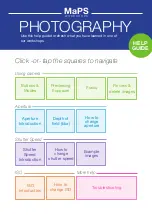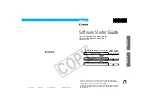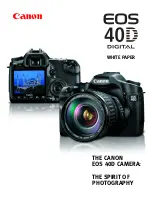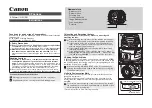
Krasnogorsk-3
Owner’s Manual
© 2003 NCS Products
rev 3.00
Page 3 of 6
INTRODUCTION
Congratulations on your purchase of one of the best things ever made in the USSR, the
Krasnogorsk-3
motion picture camera! Built as rugged as a T-72 Tank and as precise as the
MIR space station, the K-3 will give you many years of reliable use. Refer to the diagrams on the
final page and take a few minutes to familiarize yourself with the controls and mechanism of the
camera. We’ve included a short length of 16mm film you can use to practice loading.
LOADING THE CAMERA
1. Select a clean dust-free area away from direct sunlight,
2. Wind the camera a few times (it winds counterclockwise).
3. Adjust the camera speed control knob to 8 frames-per-second,
4. Flip the camera over so that the lens is pointed to your left and remove the magazine
cover. Place the cover down gently and try not to get it dirty.
5. Remove any empty daylight reels from the camera.
6. Spray a burst of compressed air into the magazine to blow away any dust or debris. Check
the film gate by opening it slightly (or removing it). [To remove the film gate push it open to its
widest and gently pull it upwards.] If the gate does not appear to have any hairs or dust
accumulated don't clean it! If it is dirty use a Q-tip or orange wood stick to clean it. You should
never clean the gate with compressed air as some types can leave a harmful residue on the lens
or mirror elements.
7. Unpack your unexposed film. Unroll approximately 18 inches of film and place the roll on
the top spindle of the magazine so that the film comes off the bottom of the roll. Remember to
push the footage counter arm aside when placing the film on the spindle.
8. Place the end of the film into the feed side (top) of the sprocket assembly. If the end of the
film is jagged use scissors or the film cutter located inside the magazine to trim it straight.
9. Slowly feed the film into the sprocket assembly by pressing the trigger on the front of the
camera. Watch the film carefully, if it starts to jam push, pull, or guide the film as necessary
through the camera until it has emerged from the take up side of the sprocket assembly.
10. The film should be pressed against the plastic guides located at the top and bottom of the
gate (this is your film loop). If the film has pulled away try to adjust it to the proper size by gently
pulling film into the loop from the feed side of the sprocket assembly. You can open the sprocket
assembly on the feed or take-up side to make adjusting the loop easier by lifting the smooth
round pin (#25 in diagram) on the bottom or top of the assembly.
11. Run some film (at least two feet) and make sure the film is running through the camera
properly. If running properly the film will emerge without scratches or ripped sprocket holes from
the take up side of the sprocket assembly.
12. If you notice the pressure plate pulsing in and out as you run film, this means the pulldown
claw is not engaging the film properly. Pull out the pressure plate and slide the film so that the
pulldown claw is engaged. You might have to shorten the take-up loop.
13. Wind the excess film snugly around an empty daylight reel by turning the reel in a
clockwise direction. Then place the reel onto the take up spindle.
14. Replace the side cover and lock it in place.
15. You are ready to film! If you hear a sudden change of sound from the magazine while
filming it may be a good idea to check on it. Opening the camera in the middle of a roll will only
expose approximately four to eight feet of film. If your camera should for some reason jam, try to
adjust the film so that it runs smoothly. In the event you have to rip the film to free it either
remove the original take up real and start another by following the loading sequence, or splice
the film back together but make sure you make a note of the film break for the lab.
On some K-3’s the plastic film guides have been removed. In this case, just make the loop
manually. The top loop should have about 4 perforations visible. The bottom loop about 7. As
long as the camera runs properly, exact loop size is not critical.







